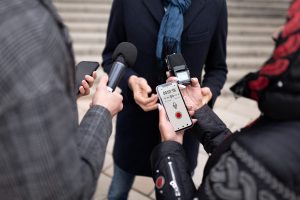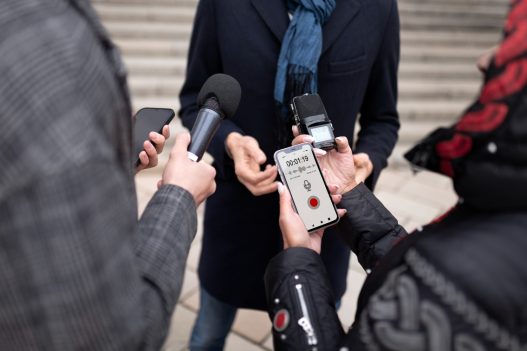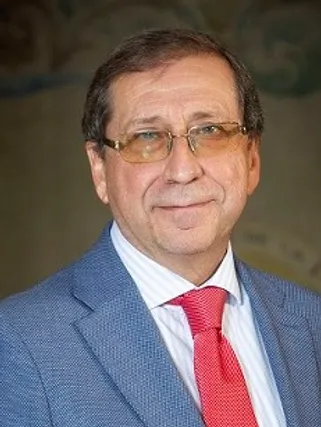
135 VIOLATIONS OF THE RIGHT TO FREEDOM OF EXPRESSION COUNTED BY THE NGO ESPACIO PÚBLICO IN VENEZUELA SO FAR THIS YEAR
The following is the text of the report by the NGO Espacio Público on the ‘General Situation of the Right to Freedom of Expression and Information, January – April 2024’:
During the first four months of the year we recorded at least 68 cases that contemplate 135 violations of the right to freedom of expression in Venezuela. These figures constitute an increase of 22% with respect to the total number of cases and 25% with respect to the number of complaints of violations received in the same period of 2023. This variation occurs on the eve of the presidential electoral process, when the State’s efforts should be aimed at guaranteeing access to information, as well as the full work of press and media workers. In this regard, we documented 16 cases in January, 15 in February, 21 in March and 16 in April.
Intimidation (41) and complaints of censorship (36) were the most frequent violations, accounting for almost two thirds of the total number of incidents recorded. Judicial harassment (19), administrative restrictions (18), verbal harassment (13), threats (5) and attacks (3) completed the list of violations.
ARBITRARY DETENTIONS
During the first four-month period, at least 18 detentions were recorded for the exercise of the right, representing an increase of 260% compared to the detentions documented in the same period of 2023. The victims were private citizens (14); members of NGOs (2); journalists (1) and public workers (1). According to the documentation obtained, at least 9 of these detentions were under the application of the Anti-Hate Law.
– On February 2, officers of the Criminal Investigation Service of the Zulia State Police Corps arrested citizen and influencer Marcos Caraballo, who was accused of using “indecent clothing” in a photo session in front of the Basilica of La Chinita, in Maracaibo, which went viral on social networks. Together with Caraballo, Polizulia officers arrested citizen Nerio Antonio Bello, for being the supplier of the disguise. The Venezuelan Observatory of LGBTIQ+ Violence pointed out that the arrest occurred after “a series of denunciations in social networks and by Catholic religious sectors”.
– On February 5, Carlos Ramón Salazar, a retired engineer from state-owned Petróleos de Venezuela, was reported missing after publishing a video in which he shows and criticizes Alex Saab. According to witnesses, he was detained by “a group of men dressed in black” in Punta de Piedra, in Margarita Island, Nueva Esparta State. A journalist commented under anonymity to NTN24 that Salazar’s relatives deleted the publications on social networks and that nobody wants to talk about the case “out of fear”.
– At least four people were arrested and charged with incitement to hatred on April 8, after disseminating a video questioning the administration of Governor Jehyson Guzmán via WhatsApp. The arrested persons were identified as Fanny Cruz, Armando Colina Medina, Liliana Cruz and Adriana Rodríguez. It was publicly known that Fanny Cruz is under house arrest, Colina Medina is under house arrest, while Liliana Cruz and Adriana Rodríguez remain in custody.
CLOSURE OF RADIO STATIONS
During this period we recorded the closure of at least 13 radio stations in the states of Apure, Bolivar, Carabobo, Distrito Capital, Lara, Portuguesa, Trujillo and Zulia. These closures are part of a policy implemented by the central government to restrict the dissemination of opinions and information through this media, which is one of the most widely used in our country. The main victimizer is the National Telecommunications Commission (Conatel), which sometimes acts in the company of state security forces.
– On February 23 Conatel ordered to shut down the transmitters of the radio stations Senda 96.1 FM, Mágica 93.3 FM and Clásicos 93.9 FM operating in Ciudad Ojeda, Lagunillas municipality in Zulia state. It was reported that a Conatel commission visiting the state ordered the cessation of transmissions of the stations “after a technical administrative review”. A source who requested anonymity confirmed that the closure was administrative and that they were asked for the media’s documents, although they claim to be up to date.
– Conatel officials, together with military personnel, closed on March 8 the radio station Bendición Stereo 93.9 FM which was operating in the city of Upata, Piar municipality of Bolivar state using as an argument that it was “shining too brightly”. According to the administrative order delivered by Conatel to the director of the radio station, the officials “verified” that the radio station did not have “administrative authorization or concession for the use and exploitation of the radio electric spectrum”.
VICTIMS AND PERPETRATORS
The media (28) and journalists (27) were the main victims. They were followed by individuals (14), citizens in general (11), NGOs/members (7), public workers (2) and photojournalists (1). In the case of journalists, they are often exposed to harassment and threats by security officials who limit their mobility or prevent them from covering news events. In relation to the media, not only have the aforementioned closures been registered, but they have also been the object of accusations by different State officials.
– The journalist of the digital media La Revista del Tuy, in Miranda, Reneé Herrera, denounced that on February 15, workers of the Instituto de Ferrocarriles del Estado prevented him from covering the Libertador Simón Bolívar station (La Rinconada). Herrera explained that he went to the place to verify some denunciations made by users about irregularities in the operation of this means of transport, but he was prevented from taking photos and videos. It was searched by officers of the Bolivarian National Police.
– The journalist of the regional media La Verdad de Vargas, Luis López, denounced on January 24 that police officers were in the vicinity of his house located in the Carlos Soublette parish of Vargas state. “I am receiving information that there are police officers near my house. At this moment I am doing my job as a journalist for La Verdad, I have nothing to hide”, said López in a video broadcast through social networks. López also denounced that police and Bolivarian Intelligence Service (SEBIN) officers passed near his house, aboard a motorcycle and a pick-up truck, and took pictures of his facade.
– On March 25, during the act of postulation of his candidacy for this year’s presidential election, at the headquarters of the National Electoral Council (CNE), the president of the United Socialist Party of Venezuela (PSUV), Nicolás Maduro, intimidated the Spanish agency EFE, the French AFP and the U.S. AP. During his speech, which was broadcasted by the main public and private media, Maduro criticized that the mentioned agencies “have not covered any candidate” among the more than 10 nominees of different parties, who even so have had spaces in traditional media related to the ruling party. “The agencies of the West, the United States, Europe and the right wing have no morals. They cover up the reality of Venezuela”, criticized Maduro.
Regarding the perpetrators, State Institutions (35) are in the first place, followed by security forces (22) and civil servants (19%). Government sympathizers (3), unknown persons (2), private individuals (2), computer attackers (1), media executives (1) and private operators (1) complete the list.
Forty-four percent of the cases were registered on the web, while 9% corresponded to the national category. The Capital District (7%), Miranda (4%) and Portuguesa (4%) are the states with the highest number of situations registered.
METHODOLOGICAL FRAMEWORK
The daily registry was carried out on the basis of a matrix of events or cases in which the following variables were included: geographic area; gender of the victims; type of victim (journalists, media, audience); typology according to the area of work (reporters, columnists, cameramen, etc.); and type of violation according to the categories defined above. The information on the different events or cases was counted on the basis of articles that appeared in national and regional newspapers, confirmed by the testimony of the victims and those affected, in order to keep a record of direct sources. Data is also collected from investigations carried out by national and/or international trade union, academic and human rights institutions.
Based on the data collected, a matrix was created that takes into account the variables explained above. A filtering of the different events was carried out, as well as the crossing of the different variables. The corresponding calculations were performed, resulting in the tables and graphs that illustrate this report. The study includes a description of the patterns of violation of the right, followed by an illustration of some relevant cases. The events or cases may involve the participation of several violating or responsible agents and also several victims. In the same way, several types of victims may appear in a case: media, journalists, photographers, and several types of violations.



